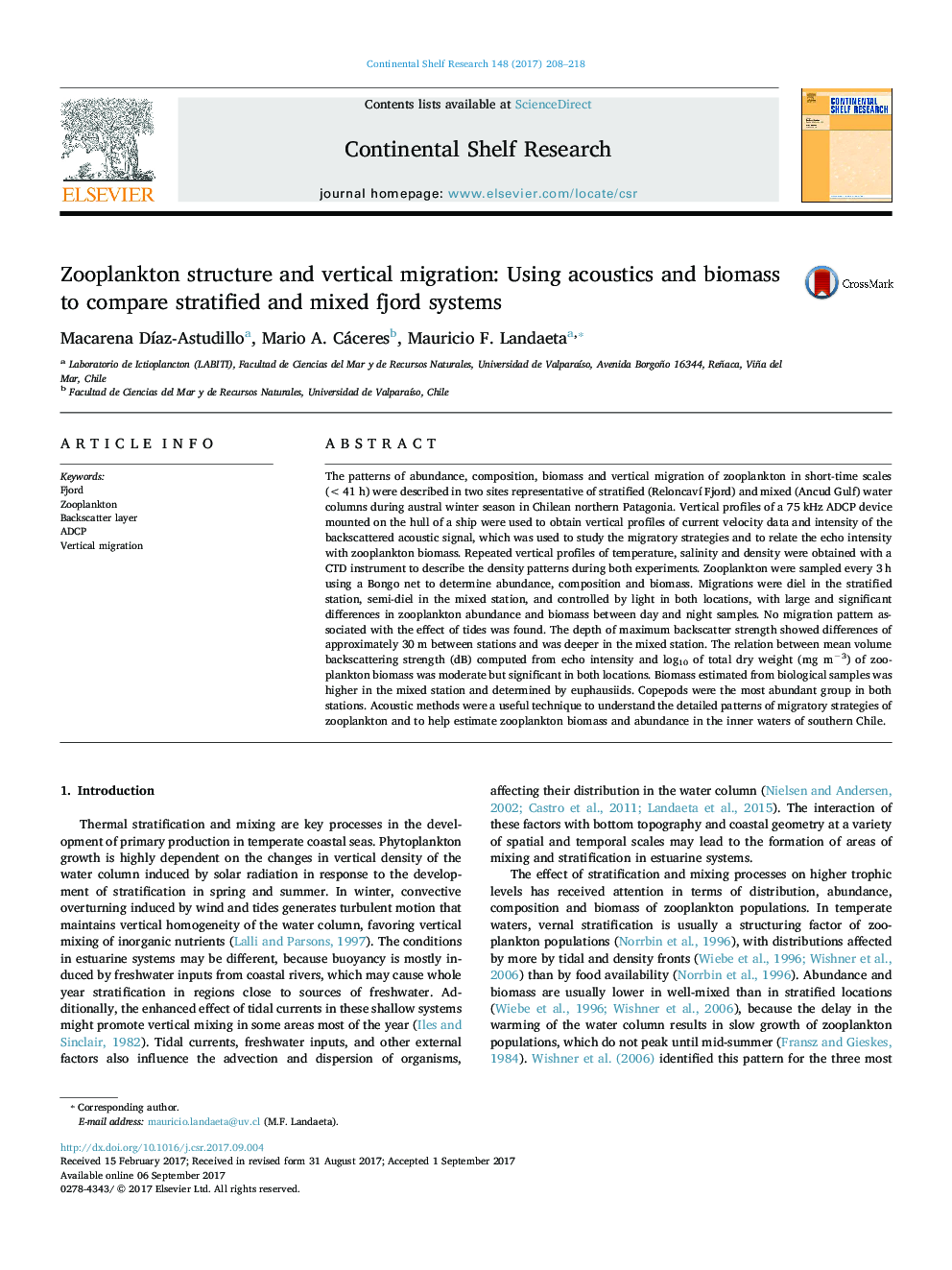| کد مقاله | کد نشریه | سال انتشار | مقاله انگلیسی | نسخه تمام متن |
|---|---|---|---|---|
| 5764540 | 1626065 | 2017 | 11 صفحه PDF | دانلود رایگان |

- Zooplankton biomass and vertical migration in short-time scales (<41Â h) was described in Chilean Patagonia.
- Migrations were controlled by light, being diel in the stratified waters and semi-diel in mixed waters.
- Migration was not associated with tides.
- Biomass was higher in mixed waters and determined by euphausiids.
The patterns of abundance, composition, biomass and vertical migration of zooplankton in short-time scales (<41 h) were described in two sites representative of stratified (Reloncavà Fjord) and mixed (Ancud Gulf) water columns during austral winter season in Chilean northern Patagonia. Vertical profiles of a 75 kHz ADCP device mounted on the hull of a ship were used to obtain vertical profiles of current velocity data and intensity of the backscattered acoustic signal, which was used to study the migratory strategies and to relate the echo intensity with zooplankton biomass. Repeated vertical profiles of temperature, salinity and density were obtained with a CTD instrument to describe the density patterns during both experiments. Zooplankton were sampled every 3 h using a Bongo net to determine abundance, composition and biomass. Migrations were diel in the stratified station, semi-diel in the mixed station, and controlled by light in both locations, with large and significant differences in zooplankton abundance and biomass between day and night samples. No migration pattern associated with the effect of tides was found. The depth of maximum backscatter strength showed differences of approximately 30 m between stations and was deeper in the mixed station. The relation between mean volume backscattering strength (dB) computed from echo intensity and log10 of total dry weight (mg mâ3) of zooplankton biomass was moderate but significant in both locations. Biomass estimated from biological samples was higher in the mixed station and determined by euphausiids. Copepods were the most abundant group in both stations. Acoustic methods were a useful technique to understand the detailed patterns of migratory strategies of zooplankton and to help estimate zooplankton biomass and abundance in the inner waters of southern Chile.
Journal: Continental Shelf Research - Volume 148, 15 September 2017, Pages 208-218